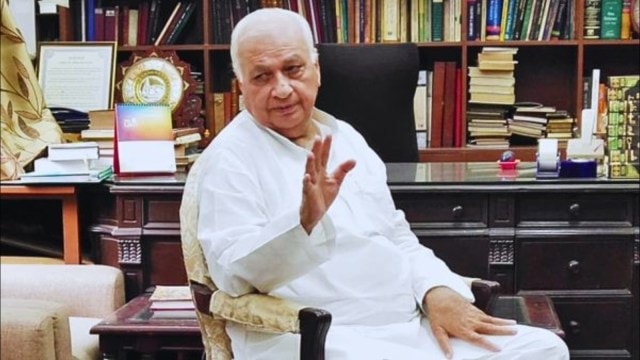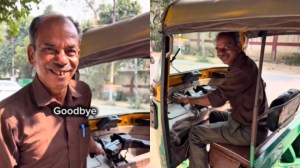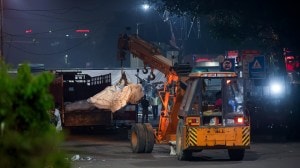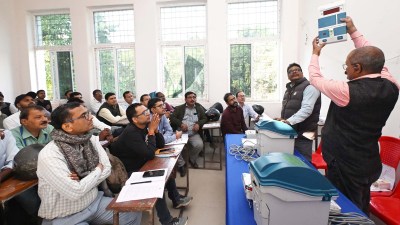Bihar Governor Arif Mohammed Khan said Friday that the delimitation proposed after the 2026 national census should be based on “data and facts, not on emotions”. He also said that the “North-South” divide – at the core of the debate – was a “false narrative”.
Khan was speaking here at the launch of a book, ‘Demography, Representation, Delimitation: The North-South Divide in India’, written by historian and joint director at PM Museum and Library (PMML) Ravi K Mishra.

Referring to the south states’ resistance to the delimitation exercise, which redraws boundaries of a constituency based on population, Khan said: “Any kind of regional disparity is not good. The ultimate goal should be towards the goal of Viksit Bharat (developed India)”.
Story continues below this ad
“In fact, if past mistakes are not corrected, there could be regional disparity. Let people discuss it without any acrimony… We had been culturally and spiritually one always but we had been politically fragmented. The interests of North and South are not different. India should progress. We have to move towards the goal of Viksit Bharat… Any narrative must not be the basis (of delimitation),” he said.
Speaking about his book, historian, and joint director at PM Museum and Library (PMML) Ravi K Mishra also argued that it was never a north versus south debate “but about India as a whole”.
“I have taken into consideration data from the 1881 to 2011 Census and found that while North India recorded a cumulative population growth of 115 per cent from 1881 and 1971, southern states recorded 193 percent growth during the same period. Adjusted to current administrative boundaries, the share of North India in the country’s population in 1881 was about 50 percent but it went down to 42 percent in 1971,” he said.
In comparison, southern states accounted for 22 percent of the country’s population and it went up to 26 per cent in 1971, he claimed.
Story continues below this ad
“Northern and Western India are underrepresented as South India has one MP per 21 lakh population in comparison to 28 lakhs in Western and 31 lakhs in North India. Kerala has one MP per 18 lakh population,” he said.
Mishra said his book proposed that while Lok Sabha seats must go up, the Rajya Sabha seats could be increased according to the existing ratio of states’ share “to strike a balance between the regions”.
BJP national spokesperson Guru Prakash Paswan said: “There should be no narrative of fault lines. It is also a false narrative that the south has been bearing the load of the north. This narrative is now shaken academically by this book. Research, not rhetoric, is important.”
Political scientist Sajjan Kumar argued that framing the delimitation debate as a ‘North vs South’ issue was misleading.
Story continues below this ad
“The case of Karnataka is markedly different from that of Tamil Nadu and Kerala. Also, besides the Hindi heartland, the western states – Maharashtra and Gujarat — are also grossly underrepresented at present. Further, the continued freeze on delimitation has specifically grossly underestimated the Dalits, tribals and minorities,” he said.
The remarks come as the date for India’s national census – and the subsequent delimitation exercise – approaches. India will conduct a two-part census exercise starting March 1, 2026. While most of India will be covered in the first half, the Union Territory of Ladakh and the non-synchronous snow-bound areas of the UT of Jammu and Kashmir and the states of Himachal Pradesh and Uttarakhand, will be covered in the second half on October 1.
This comes three months after Rashtriya Lok Morcha chief Upendra Kushwaha called for a population-based delimitation in India. This June, Kushwaha reignited the debate that the exercise was “a matter of constitutional rights and political justice for Bihar and other northern states”.
Currently, the number of seats is frozen at 543 following the 42nd Constitutional Amendment, which took the 1971 census as the baseline. While it was initially meant for 25 years, it was extended for another 25 — until after 2026 — by the 84th Amendment in 2002.
Story continues below this ad
With India’s population estimated to stand at 1.42 billion now, the limitation exercise could lead to a considerable increase in Lok Sabha seats to over 700 from the current 543. Bihar, seats too, could go up significantly, to 73 from its current 40.
Southern states had been resisting the exercise by arguing that their more successful population control measures could mean a loss of sufficient representation and regional imbalance.









